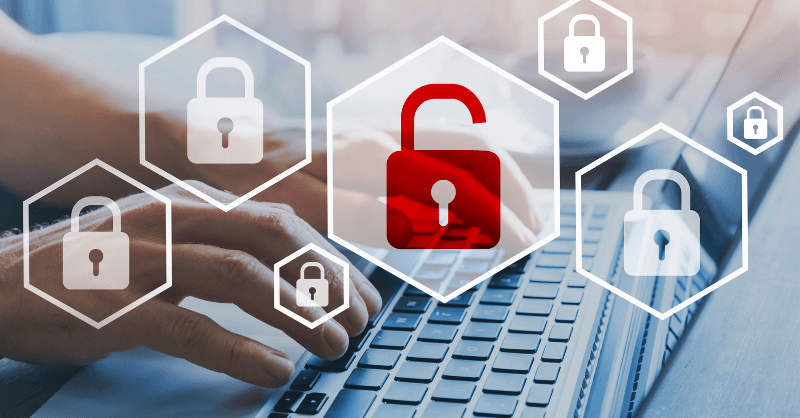A well-maintained bicycle is a basic need to get the most out of this time. The blog will enlighten readers on the common bicycle maintenance tips for riders to enjoy their rides to enjoy the ride to the fullest.
Whether it’s your day-to-day commute or a weekend free ride cycling is a fun activity either way. The joy of cycling is to get to enjoy the fresh air and exercise your muscles at the same time. But all this can perish if your bike is not well maintained.
Regardless of what type of bicycle you ride or what terrain you ride on as a rider, it always makes sense to know a thing or two about maintaining bikes. Well maintained bicycles help you enjoy your rides with more freedom and confidence.
Becoming accustomed to a tool or two will get you out of sticky situations and save you some bucks as well. On the other hand, you will be able to help your friends as well.
Table of Contents
The primary tool you need to fix a faulty bicycle is your hand. But you also need a few mechanical tools to work with. You need to have at least a few tools to work with your bicycle all by yourself. The bare minimum tools to work with your bicycles are :
A bike multi-tool is like a Swiss army knife designed for bikers to handle problems with multiple parts in the bike. The tool consists of standard-sized hex bits from 2mm through 10 mm. Besides, the devices have standard Torx bits and screwdrivers. The tool also features chain repair tools, quick link storage and a small knife to carry out random bits of work you may encounter while fixing your bicycle.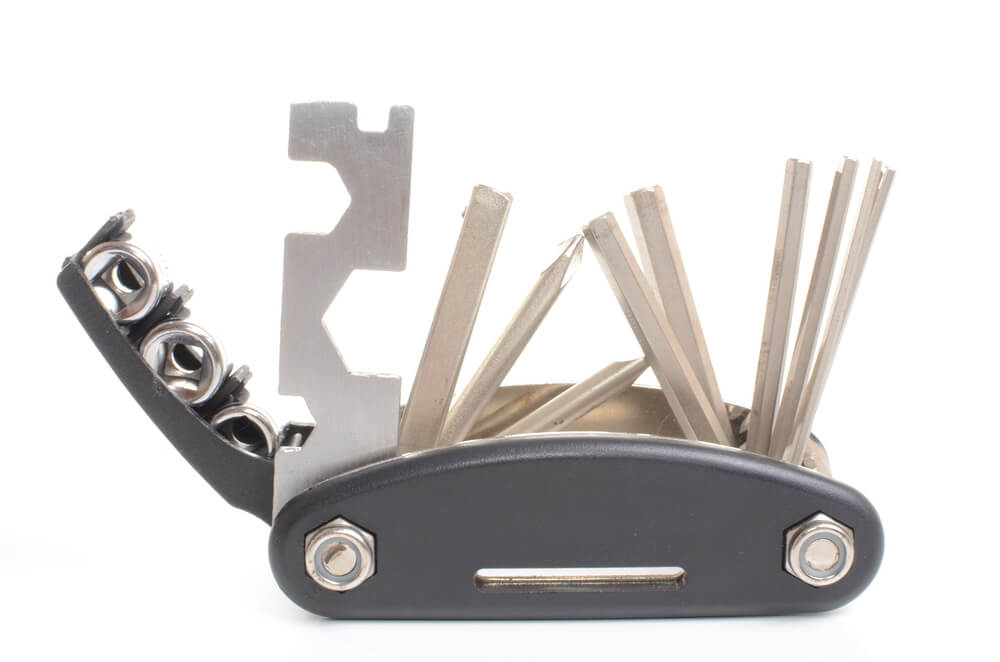
Bike multi-tool
There are special kinds of lubes specially designed for bikes. They reduce the friction in the moving parts and prevent metals from corrosion. As a result, they are essential for the longevity and performance of the bike. Bike lube
A degreaser is a type of cleaner designed to remove grease, oils, cutting fluids, and other corrosion inhibitors. They are used for removing grease from drivetrain parts. Apart from the mentioned above, you are always welcome to use your old t-shirts and toothbrushes to keep your bicycle clean.Degreaser
Essential Bicycle Maintenance Tips
There is a starting point for everyone. Either you have to learn directly from someone with previous experience. New bikers as well old ones it’s not like you can acquire bike maintenance skills from birth. You can start by doing simple maintenance works by yourself and continuously growing your experience.
To start all on your own, you can read blogs, look for videos or even subscribe to high-quality online courses and tutorials to learn from the absolute best. Conducting a background study before touching up on your bicycle will surely get your spirits high and start you off on the right foot with repairing your loved bike. Few fundamental maintenance tricks for bikers are as follows:
Press down on the tires to see if there is a bulge. Though it is not an accurate measure, you can gain a general idea from it. The max pressure for riding in a smooth train is 65psi. For hilly and rocky trains it’s better to stick around a pressure around 40psi. You can use an air gauge or the built-in gauge provided with your pumper to reach your desired pressure. Also, check out for wears and tears on the tires. If you find too much wear and tears on the tires or find exposed threads and wires don’t even think about using them.1. Check the tires
Most modern bikes have replaced the nuts and bolts with a quick release to attach the bracket wheel. Check whether the leaver is placing the wheels correctly in place. In addition, check out whether the leaver is applying the right amount of tension to keep the wheel in place. 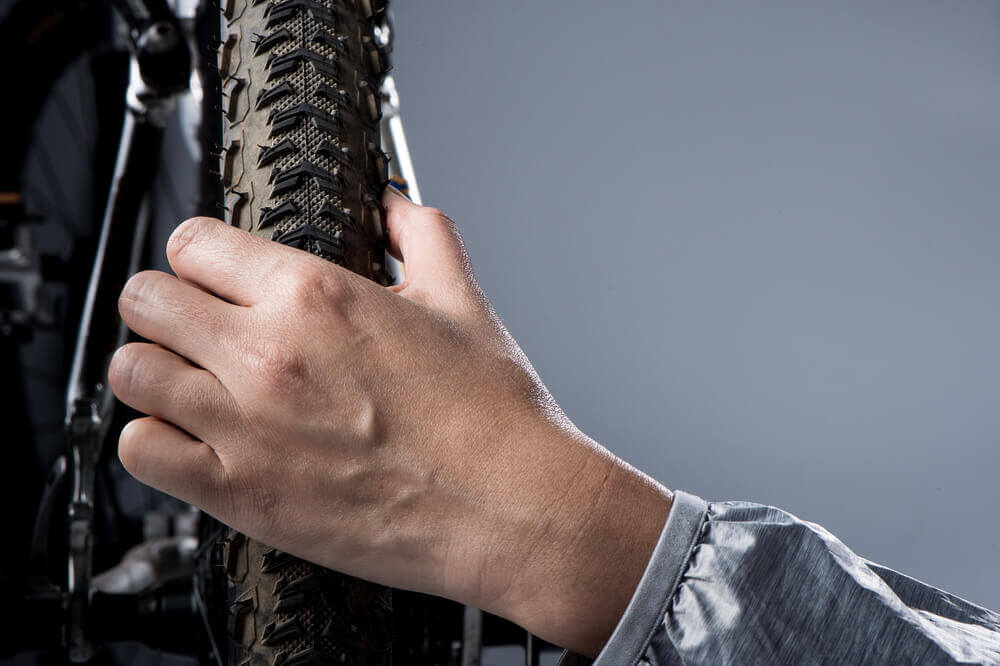
2. Examine the quick wheel release
The drill to check the brakes is simple. Press each of the brakes firmly one and rock the bike back and forth. If you see the wheel move in any of the cases you need to work on your brakes. 3. Inspect the brakes
To check the front wheel, grab the handlebar and rock the wheel from side to side. If there is no movement in any direction, the wheels are doing fine. Another drill is to lift the front end and spin the wheel in both directions. If the wheel makes a crunchy sound, you need to work on it. If the sound is smooth, the wheel is fine. Repeat both the procedures for the back wheel as well.4. Don’t forget the wheels
To check the crank arms stand on one side of the bike. The Crank arm is the L shaped metal that attaches the crankset to the pedal. Rotate it and point it upwards. Now pull the crank up back and forth once towards yourself and then towards the bike. Repeat this on the other side as well. If there is a movement with the crank arms on both sides, there is a problem with the bottom bracket, and it needs adjustment. If there is movement on just one side, then the screws are probably undone on any side. 5. Overall inspection of the crank arms and pedals
Firstly, inspect the chain for any surface rust. If you find a little, then you can probably get away with cleaning and re-lubricating it. But if it’s completely covered with solid grimes or rust, then it needs replacement. If you see the chain covered rubbish partially then clean and lubricate it. You can also check if the chain moves freely over the pins without any kinking, skipping, or binding while you rotate the crank arm. If it does any of these, it needs to be cleaned and lubricated.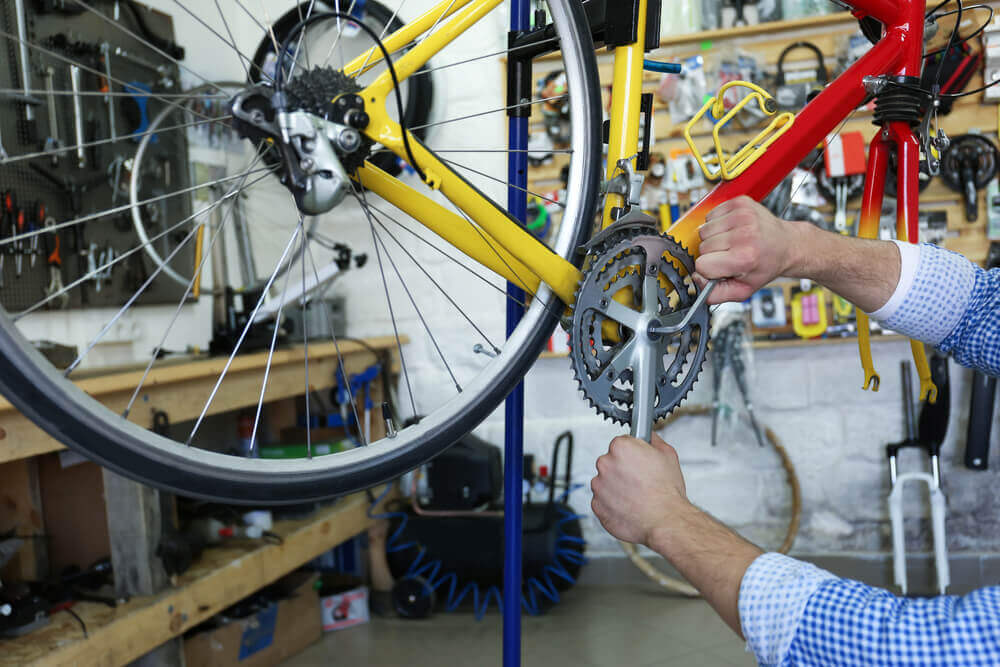
6. Make sure the chain is working fine
The to-dos of bicycle maintenance are as follows: Over tightening bolts and nuts while fasting can damage the bolts as well as the thread. On the other hand, by avoiding over tightening will prevent you from securely drawing them in future. So it would help if you tried to develop a sensitive touch while working with booths and nuts. While working with the headset of your bicycle, lose the stem bolts first. Then you can tighten the top cap. Otherwise, it will damage the cap and star washer inside the steering tube. Having fairly even tightened spokes makes the wheel strong. Even tension from the spokes on the rims is a significant factor for consistent performance of the wheel. Evenly tightened spokes keep the wheel running straight as it spins. As a result, you will enjoy a consistent bicycle performance keeping the occasional wobbles and hops away. It’s essential to look after the wear on the rim of cycles that operate with rim brakes. Some manufacturers provide wear gauges to indicate them. Usually, these are shallow holes at strategic locations or marked stickers along the circumference of the rim. Whenever the marker disappears, You need to change the rim. Otherwise, your brakes perform the way they should be. Weary can bring unfortunate consequences. While working with the crankset, gears and pedals always consider wearing slime protection. The chains and the chainring’s teeth can inflict painful injuries if any of them spills off while working. So consider wearing some protective gloves or even your riding mats. Never hurry with sensitive maintenance works. Try to position your body in a way, so you can pull towards yourself rather than pushing away. So the right techniques while working will give you better control if the threads give away suddenly. Riders often keep seat posts untouched keeping the same saddle height for years. But in the long run, keeping it this way may make it impossible to change the saddle height without getting it repaired. As a result, moisture enters the seat post and cause damage by oxidation. Over time damage will keep adding up and decrease the resale value of the bike. Overhauling the seat post and greasing the point of contact will keep it safe from extra maintenance costs. Installing pedals to the crank arms without lubricating them will indeed cause a headache for future maintenance works. Without the grease, the pedals will over tighten, and corrosion will slowly take over. If pedals get brittle from pollution, it may become hard to recover them from crank arms. So it’s wise to take the recommended step before it’s too late.7. Top to-dos for Bicycle maintenance
Avoid over-tightening bolts
Tighten headset to a limit
Tighten the spokes to a limit
Watch out for wear on the rims
Use protective gloves
Overhaul your Seat post every once in a while
Lubricate your pedals
Inserting nylon tapes or extra pieces of metal inside the nut adds excess friction and prevents loosening. Another idea is to fit a spring inside the nut. The spring firmly grasps the bolt threads and is designed to move in the opposite direction. As a result, the unwinding of the nut is prevented. 8. Securing the bolts and joints
Whipping off dust after each ride is an excellent practice. Pay more attention to the dust suspending components of the bicycle. Use a brush where necessary. Clean the cassette by soaking a rag in degreaser and sliding it back and forth between each cog. You should avoid using strong detergents and high-pressure water as it might cause degradation in the metal parts.9. Cleaning your bike
If you find it hard to shift gears or your chain is falling off regularly, you have problems in your gear wheel. You need to align the chain and gears regularly to ride your bicycle harmoniously. In a nutshell, adjust the front derailleur first, then the rear. Suppose the derailleur needs minor tweaking (gears are basically in adjustment but are “not quite right”). In that case, you adjust the wrong one, recheck the overall adjustment, and adjust what needs changing.10. Adjusting your gear and gear wheel
The usual fails that bikers make unknowingly are listed as follows: Don’t use the regular WD-4- for lubricating your chain. There are cycling-specific lubes available for lubing your chains. Leaving off too many lubes on the chains can be counterproductive as it will help accommodate more dirt. So cleaning off the excess lube with a rag is a good idea as well. The derailleur screws are not too loosely fit, although they may seem to you. They are set to a limit so that derailleurs can move. The chances are you don’t need to touch them at all. Using lube in your breaks or anywhere around the rim is heavily contradictory. So if you get a squealing sound, it’s either your brake pads need an adjustment or need a replacement. The quick-release lever has to be closed with enough tension to support the wheel throughout the ride. Opposing nuts give proper tightening to the screws as well to keep the nut in position. 11. Bicycle maintenance fails
Using wrong lube
Winding derailleur limit screws
Using lube for brakes squeal sound
Improperly closed quick release
Dry, dirty and rusty chains and other components can cause squeaky sounds in your bike. The sound gives a primary sign that your bicycle needs maintenance work. To get rid of the sound, you can start by disassembling all the moving components in your bike and clean up the dust. The crank is the section of the bike where the vital rotating elements of the cycle are present. Apply lube where necessary and if you find rusty and weary components try to replace them. Chains and bearings are two instruments which need frequent replacements once they become old. Related:12. Listen to your Bicycle
1. 15 Motorcycle maintenance tips you should know
2. 20 Essential Car Maintenance & Repair Tips in 2023
Closing Note
Regular usage can develop a variety of ware and tears on the components of your bike. So the excellent maintenance is essential to enjoy your bike rides and make them as safe as possible.
Before you get in touch with actual maintenance work, it’s better to familiarize yourself with the bicycle’s necessary safety checks. You can conduct the safety checks once every two weeks. But make sure you run the safety checks heading out for a long trail.
Recent posts
- The Impact Of Remote Work On Women In The Marketing Industry
- 5 Reasons Why You Should Pursue a Cybersecurity Career
- Differentiating Web Design and Web Development
- Top 10 Social Media Management Tools for Businesses in 2024
- Why is Child Development so Important in Early Years
- Line Management: How to be a Good Line Manager?
- How Long Should a Health Sector Career Take?
- The Importance of BSL in Everyday Life
- Why Corporate eLearning is Essential for Organisational Training
- Take your Business Expertise to the next level: Get your MBA






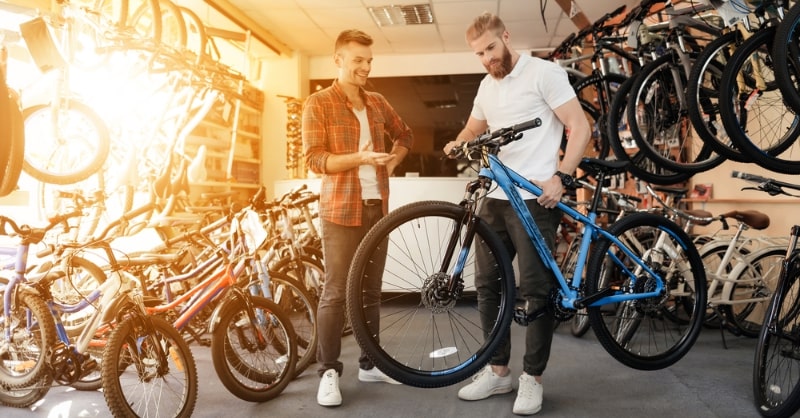
 February 04, 2021
February 04, 2021



